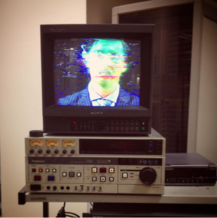Crafting Future Memories
MEMORY
Inside the Womb
When we started brainstorming about Echoic Memory, one thought that came to mind was the first time we as human beings experience sound, inside our mothers womb. The fetus’s ears begin to function while he’s still firmly ensconced in the womb. Ears are well developed at about 20 weeks’ gestation, according to Barbara Kisilevsky, a professor in the School of Nursing at Queen’s University in Kingston, Ont.
By 26 or 27 weeks, fetuses respond to sound and vibration applied to mom’s belly. “They will move or their heart rate will change,” says Kisilevsky. By 30 to 32 weeks, they generally hear “airborne” noise, such as voices or music — you might notice they kick or startle to a door slamming or car backfiring.
In addition, they become accustomed to the soundscape of the womb — the steady thump of mom’s heartbeat, the whooshing of blood through her blood vessels, the rumbling of her stomach and, most importantly, the tones of her voice filtered through tissues, bones and fluid. Research on newborn infants shows that they will turn their head when they hear their mother’s voice more often than when they hear the voice of a female stranger, says Kisilevsky.
What’s more, infants seem to remember what they hear in the womb, preferring familiar pieces of music or books. In one famous experiment, a group of mothers read the Dr. Seuss story The Cat in the Hat out loud regularly during their pregnancy. At birth, their babies were hooked up to recordings which they could “select” by sucking on a non-nutritive nipple. After a few trials, babies learned to suck at whatever speed was necessary to obtain their mother’s voice reading the familiar story. “They wouldn’t understand the meaning of the words,” says Als. “But they like the mood and the familiar rhythms of the music or the words.”
There’s even evidence that the roots of bilingualism go as far back as the womb. A study published last year by University of British Columbia psychology professor Janet Werker and her colleagues found that the rhythm of a mother’s language helps prepare her infant for language development once the baby is born. Newborns sucked more on a pacifier hooked up to a computer when they heard their mother’s native tongue, the researchers noted, indicating that they were paying attention. If their mother spoke two languages, the newborns showed equal interest in both, but if the mother spoke only one, they ignored the unfamiliar language.
We started wondering if returning to the womb surrounding would do something to people, would they get more relaxed or anxious? Would it fix subconscious problems?
S.W.A.S
But we are not scientists, we would never know for sure how people will react to this. But still the concept intrigued us, so we decided to take the comical road. We created a fictional device that would produce womb sounds and reform the noise from your surroundings to relaxing, by fluid filtered, sounds. The device is called the S.W.A.S. or the Schwartz Womb Audio Simulator (Schwartz is a fictional company). People could wear this everywhere and it will filter the noise of, for instance, crying children on the bus or if the neighbors have a party next door and you're trying to sleep. It is just like an MP3-player with headphones. This concept was adapted to a '80 tel-sell commercial video, using a green screen and is on purpose really terrible edited and acted out for comical effect. The device is obviously a scam.
Putting the commercial in the context of the past (80's style VHS commercial) we wanted to give tell, without showing, the unsuccessfulness of this product. By placing it in the past, making a product that is in theory futuristic, but looks like something very old, the viewer will realize (living in and knowing the 'now') that apparently this product either didn't work or it didn't appeal to anyone. With this project we wanted to criticize the way people view their own memories and how they might create them out of nothing. We also want to raise the question whether creating a device that will influence your brain and it's memories in such a drastic way is a good thing to do, or if it might have a bad impact on your mental state.
External Links and Video's
http://www.nerdfitness.com/blog/2012/07/16/life-is-a-game/
http://www.huffingtonpost.com/kara-loo/7-ways-video-games-help_b_6084990.html
http://www.instructables.com/id/Reflective-Prism/?ALLSTEPS
http://mandelubber.blogspot.nl/p/tutorials.html
http://pediatrics.aappublications.org/content/127/4/800.full
http://www.todaysparent.com/pregnancy/being-pregnant/babys-view-of-the-womb/
https://www.youtube.com/watch?v=lxC2X2QqYJc


